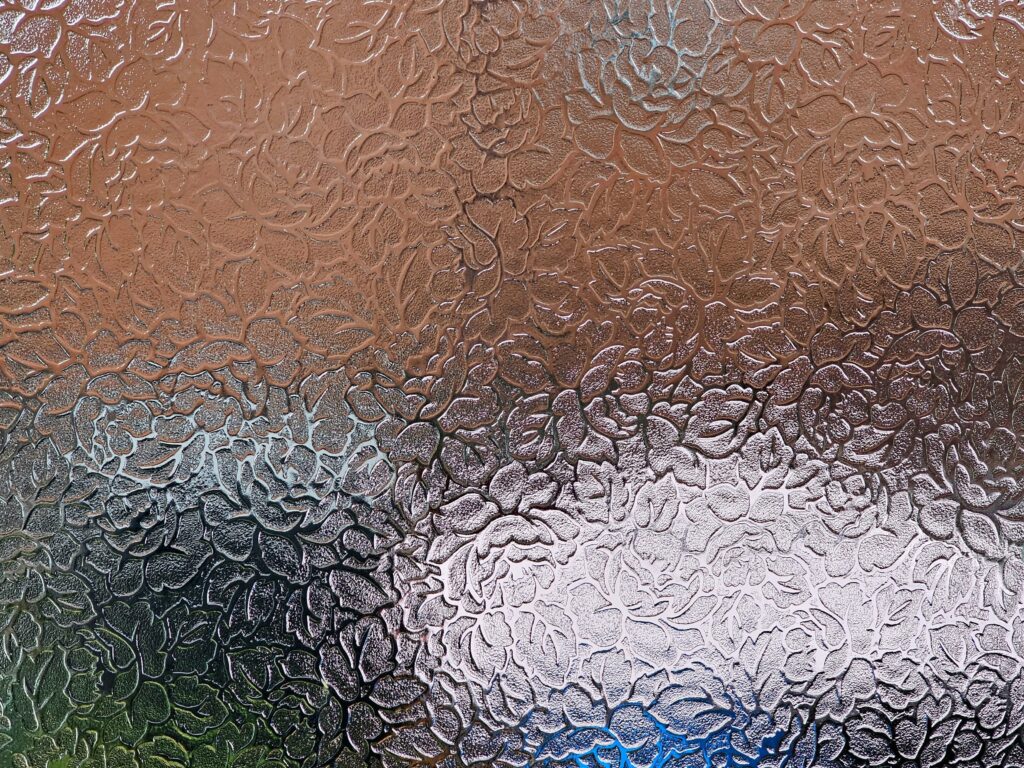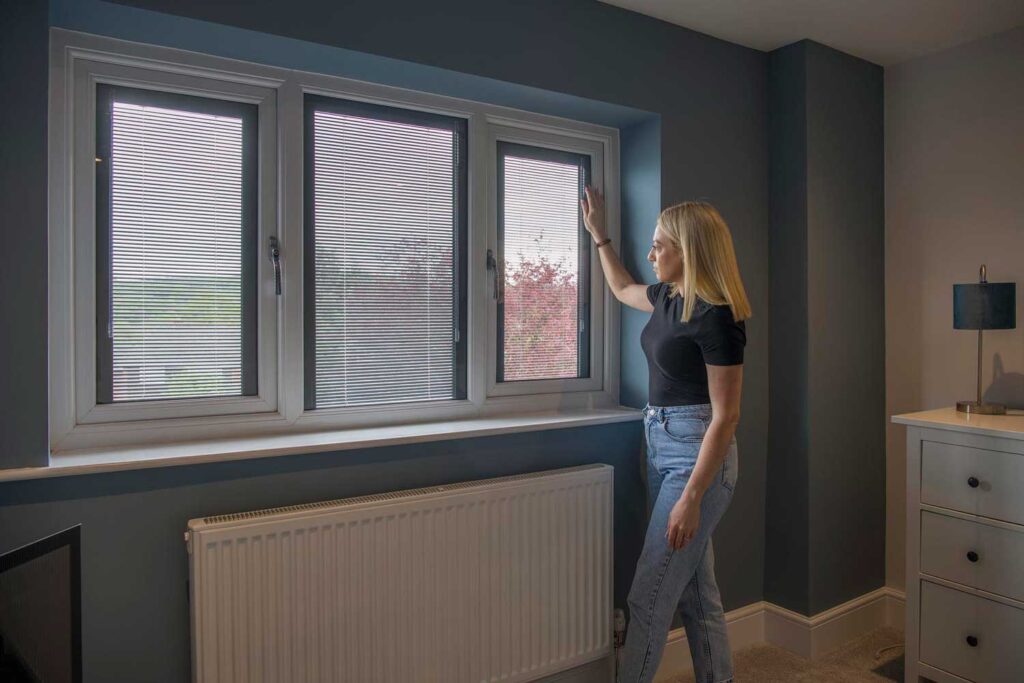Privacy Window Films: A Guide To Creating Privacy In Your Home
6 June 2023
Updated 12 July 2023
Our homes are our safe spaces, a place where we can feel comfortable, at ease, and importantly, relax from increasingly busy lives. But sometimes that downtime can be interrupted or ‘put you on edge’ through lack of privacy. There are many ways to create privacy through your windows, such as the options we’ll take a look at today:
- Frosted glass
- Privacy window films
- In-window blinds (integral blinds)
- Curtains and blinds
After all, our homes are full of windows and doors that are designed to be transparent to allow natural light in and to allow us to look outside. There are, however, situations where we want an increased level of privacy.
Whilst double glazed windows are typically transparent, they don’t have to be. You probably have a window in your bathroom that has a frosted effect, which allows natural light through, but creates by privacy by obscuring what you can see through it.
But what if you want to create privacy in other areas of your home? We will take a look at the options available to create privacy in your home and how you can go about doing it yourself, or calling in the experts.
Options for creating window privacy
Frosted (obscured) glass
As mentioned previously, frosted (also known as obscured) glass, is likely already prevalent in your bathroom, but it is an ideal option for creating window privacy in other areas of the home as well, if you know that you will never want full visibility through that particular window.

Frosted glass is a permanent solution which requires no additional maintenance and will provide one of the highest-quality window privacy finishes.
The main downside to frosted glass is that, as it is permanent, you won’t be able to have flexibility to decide when you want additional privacy and when you don’t. Not only does it require a qualified window fitter to replace the glass to fit it in the first place, but it would require the removal as well, should you ever want visibility through the window again.
As it requires replacing the glass, or in some cases, the entire window, it is one of the more expensive solutions to creating privacy. But if you’re looking for a high-quality finish that provides permanent privacy, then replacing the windows in your home with obscured glass is a good option.
If you are wanting to go down this route, see how much replacing your windows with frosted glass will cost by designing your windows online and getting an online window quote.
Privacy window films
If you’re not comfortable, or it’s not practical, to replace your windows or glass, then privacy window films provide a more accessible route to creating window privacy.
Rather than replacing the windows or glass, a film is applied over the top of the existing glass to add an effect to it, which then creates the privacy.
There are various types of privacy window film available.
Typically, you will find self-adhesive or ‘static cling’ window films. These window films are commonly stuck onto the interior glass and remain in place by creating a static bond. These are often provided on a DIY basis, as they are relatively easy to install yourself using a mixture of water and washing up liquid, though sometimes it can be tricky to create a perfect finish, as it’s easy to create bubbles or miscut the film.
There are also more premium window films available, often installed by a professional who will perfectly cut the film to size and fit it to your windows. This can be a better option if you’re looking for a tidier, more professional-looking finish.
In-window blinds (integral blinds)
Combining the privacy-enhancing properties of privacy window films with the flexibility of curtains and blinds, integral blinds provide a suitable alternative, such as those offered by Morley Glass.

With integral blinds, the blind is fitted within the glass, allowing you to create privacy when you want and create visibility when you want to look out. Integral blinds don’t take up any additional space, and can be fitted in windows, bifold doors, sliding doors, and conservatories.
What’s more, as the blind is contained within the glass unit itself, there is no maintenance required, such as dusting or vacuuming, as it is all self-contained and not exposed to day-to-day life.
As with installing frosted glass however, integral blinds is a more involved option, requiring the replacement of the glass or the window, and comes at a higher price tag than installing privacy films.
Curtains and blinds
It might seem obvious, but the easiest way to create privacy from your windows and doors is to close the curtains or blinds.
The main disadvantage to this, however, is that you’re blocking out natural light, which consequently means you’re likely to have the lights switched on more often, which also increases energy costs.
If you are going down the route of using blinds, then you could choose non-blackout blinds, that way they will let some level of natural light through, giving you the best of both worlds.
Common scenarios
To help provide you with some specific advice, we’ve taken a look at the common places in the home where people are looking to create privacy and look at the best option for your situation.
What can I put on my bathroom window for privacy?
If you’re wanting to create privacy in your bathroom, then ideally you would have frosted glass within your bathroom window.
We typically wouldn’t recommend using privacy window films in this situation as the amount of moisture in a bathroom can cause the film to lose its bond to the glass and begin to slip down.
Another option is to install a blind, preferably one made out of plastic (to prevent mould growth and moisture absorption), which can be closed when you’re using the bathroom, whilst having the added benefit of allowing you to open the window to let out moist air whilst maintaining privacy.
What to put on my front door for privacy?
For front doors, door curtains are a good option to add some privacy, especially if your door has tall windows within it, like many composite doors do.
Whilst you could add window film to your door, depending on the size and number of glass panes, you may find yourself having to do a lot of cutting and trimming!
Windows you can’t see in but can see out
If you’re wanting to be able to see out of your window but not allow others to see in, then there is a special type of privacy window film called one-way window privacy film. This film typically has a reflective exterior that faces the outside, helping to reflect heat and prevent people seeing in, whilst on the inside, you’ll be able to look out, albeit with a darkened view of the outside world.
Frequently asked questions
There’s a wide variety of questions people ask when they’re looking to make their windows more private. We have answered some of the most common questions here.
Where can I buy privacy film for windows?
Privacy film for windows is available from a number of retailers, including B&Q, Dunelm, and Amazon. They are available in a range of styles with different patterns on, or can be purchased without any pattern. They come in various size rolls but will nearly always need you to cut them to size yourself.
How do I apply window privacy film?
Most window privacy films will require you to measure your window, cut the film to size, clean the glass, and then apply a water + washing up liquid solution from a spray bottle onto the glass, before applying the film over the top and using a squeegee to iron out any bubbles.
How to remove window privacy film?
If your window film has been applied using the static cling or self-adhesive method, then they are typically easily removed by gently pulling up one edge and slowly pulling the film away from the glass until it is fully removed. You may need to clean your window after removal to ensure any residue or debris is cleared.
We hope that this has proved to be a useful resource and that you’re now equipped with the information needed to make your home more private.